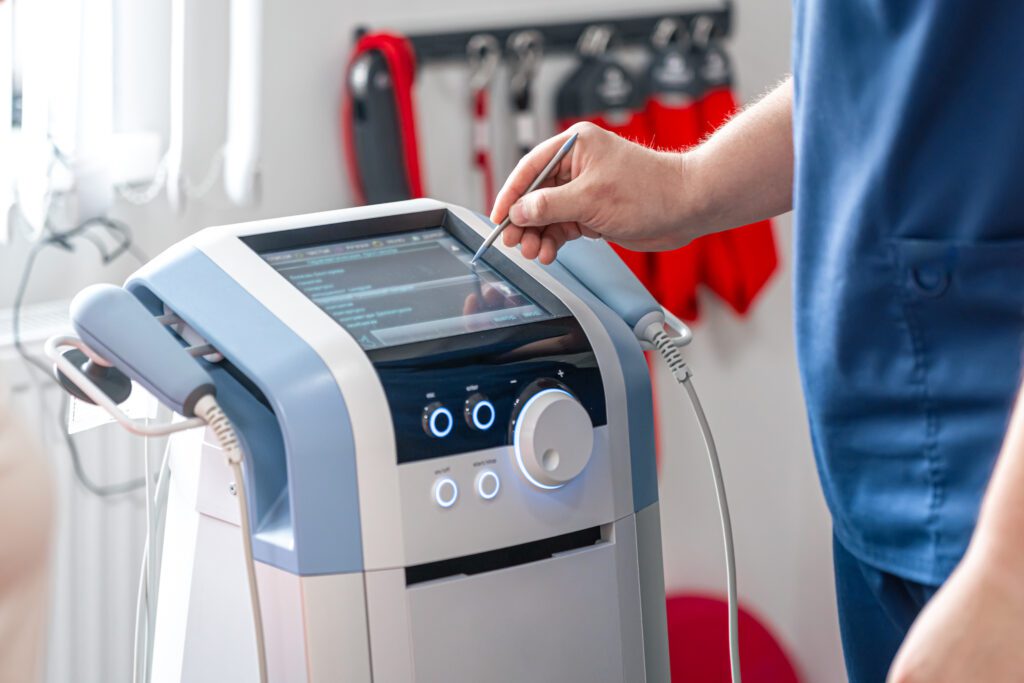Marketing medical devices is a tricky challenge that can yield impressive results. Success in this field requires a well-rounded strategy that combines innovative product design, targeted marketing, and strict adherence to regulatory guidelines.
In this guide, we’ll explore the key elements of a successful medical device marketing strategy, helping you navigate the complexities and maximize your device’s potential in the medical device industry.
Building an Effective Medical Marketing Strategy
Creating a comprehensive marketing strategy for medical devices involves several crucial steps. From perfecting your device design to ensuring regulatory compliance, each component plays a vital role in your overall success.
Let’s delve into these critical aspects and uncover the best practices for medical device companies looking to ace medical device marketing.
Device Perfection Process
Before you even think about marketing, your medical device must be meticulously designed to meet the needs of your target audience.
Ask yourself questions like:
- “Is this device easy for the target patient to use?”
- “Is this device memorable and appealing?”
- “Does my brand convey trust and expert knowledge?”
- “Does my device cause unintended life interruptions or annoyances in a patient’s day to day activities?”
These questions should be addressed during the product ideation and testing phases. A device that is user-friendly, reliable, and aesthetically pleasing will not only attract customers but also foster trust and compliance.
The way your device is designed and how it appeals to patients will significantly influence your overall marketing strategy, making it a foundational aspect of your marketing plan.

Market Segmentation and Targeted Digital Marketing
Each medical device company must identify your target market and develop plans to effectively reach them. A well-defined target market ensures that your marketing efforts are focused and effective, leading to higher engagement and conversion rates.
Here’s how you can segment the market and implement targeted medical device marketing strategies.
Market Segmentation
1. Demographic Segmentation:
- Age: Different age groups have distinct needs and preferences. For instance, elderly patients may prioritize ease of use and comfort, while younger patients might focus on advanced features and technology.
- Gender: Some medical devices may be gender-specific, requiring tailored marketing messages to appeal to either men or women.
- Income Level: Higher-income segments might be more interested in premium features and advanced technology, whereas lower-income groups may prioritize affordability and value for money.
2. Geographic Segmentation:
- Location: Regional health issues, climate, and local regulations can influence the demand for certain medical devices. Tailor your marketing strategies to address these specific regional needs.
- Urban vs. Rural: Urban areas may have better access to healthcare facilities and technology, whereas rural areas might require more durable and easy-to-use devices.
3. Psychographic Segmentation:
- Lifestyle: Patients’ lifestyles, including their activity levels and health consciousness, can impact their device preferences. For example, active individuals may prefer portable and lightweight devices.
- Attitudes and Beliefs: Patients’ beliefs about health and medical treatments can influence their openness to new medical devices. Marketing messages should resonate with these beliefs to build trust and acceptance.
4. Behavioral Segmentation:
- Usage Patterns: Understanding how frequently patients use medical devices and in what contexts can help in designing marketing messages that emphasize convenience and ease of use.
- Benefit Sought: Identify the specific benefits patients seek from your device, such as pain relief, mobility improvement, or diagnostic accuracy, and highlight these in your marketing campaigns.
Once you have a clear understanding of your target segments, develop tailored marketing messages that resonate with each group. Personalization and evidence-based marketing is key to connecting with your audience and addressing their specific needs and preferences.
Targeted Digital Marketing Strategies
1. Search Engine Optimization (SEO):
- Keyword Research: Identify keywords and phrases that your target audience uses when searching for medical devices. Incorporate these keywords into your website content, blog posts, and product descriptions to improve your search engine ranking.
- Content Creation: Develop high-quality, informative content that addresses common questions and concerns of your target audience. This could include blog posts, whitepapers, and videos that demonstrate the benefits and usage of your medical device.
- Local SEO: Optimize your website for local searches, especially if your device is intended for a specific geographic region. Ensure your business listings are accurate and include relevant local keywords.
2. Pay-Per-Click (PPC) Advertising:
- Google Ads: Create targeted ad campaigns using Google Ads to reach patients actively searching for medical devices. Use precise keywords and demographic targeting to ensure your ads are seen by the right audience.
- Retargeting: Implement retargeting campaigns to reach visitors who have previously interacted with your website but did not convert. Retargeting keeps your brand top-of-mind and encourages potential customers to return and complete a purchase.

3. Social Media Marketing:
- Platform Selection: Choose social media platforms that align with your target audience. LinkedIn can be effective for reaching healthcare professionals, while Facebook and Instagram are suitable for targeting patients and caregivers.
- Content Strategy: Share engaging and educational content that highlights the benefits and features of your medical device. Use a mix of posts, including testimonials, case studies, and how-to videos, to build trust and credibility.
- Social Media Ads: Utilize paid social media ads to reach a broader audience. Use advanced targeting options to narrow down your audience based on demographics, interests, and behaviors.
4. Email Marketing:
- Segmentation: Segment your email list based on factors such as patient demographics, past purchases, and engagement levels. Send personalized emails that address the specific needs and interests of each segment.
- Educational Content: Provide valuable information in your emails, such as tips for using the device, updates on new features, and health-related articles. This positions your brand as a knowledgeable and trusted resource.
- Call to Action (CTA): Include clear and compelling CTAs in your emails to encourage recipients to take the next step, whether it’s scheduling a demo, making a purchase, or contacting your sales team.
When medical device manufacturers implement these targeted digital marketing strategies, they effectively reach and engage audiences, driving higher conversion rates.
Regulatory Compliance
Marketing medical devices requires navigating the regulatory landscape effectively. This process is a critical component of marketing in the healthcare industry. The FDA has stringent requirements that must be met to ensure your device is safe and effective. Key aspects of FDA compliance include:
- Premarket Notification (510(k)) or Premarket Approval (PMA)
- Adherence to Quality System Regulation (QSR)
- Proper labeling and marketing practices
- Conducting post-market surveillance
Understanding and complying with these regulations is essential to avoid legal issues and build credibility with your customers. Ensure that your marketing materials accurately reflect the device’s capabilities and adhere to FDA guidelines to maintain compliance and trust.
Building Compliance into Your Marketing Strategy
Understanding and complying with these regulations is essential to avoid legal issues and build credibility with your customers.
Here are some tips for integrating compliance into your marketing strategy:
- Collaboration: Work closely with regulatory affairs experts and legal counsel during the development and marketing phases to ensure all materials meet FDA requirements.
- Training: Provide comprehensive training for your marketing and sales teams on regulatory compliance, focusing on the importance of accurate and truthful representation of the device.
- Documentation: Maintain detailed documentation of all compliance activities, including 510(k) or PMA submissions, QSR procedures, labeling, and post-market surveillance reports.
- Monitoring: Regularly review and update your marketing materials to ensure they remain compliant with current regulations and reflect any changes in device performance or usage.
Remember, compliance is not just a legal requirement but a vital component of a successful and reputable medical device marketing strategy.
Product Positioning
How you position your product in the market can make or break its success. Product positioning involves defining the unique value proposition of your medical device and communicating it effectively to your target audience. Consider the following steps:
1. Identify the Key Benefits and Features
Determine the specific benefits and features that set your device apart from competitors. This could include superior technology, enhanced user experience, innovative design, or cost-effectiveness.
Focus on aspects that directly address the pain points and needs of your target audience. Emphasize how your device provides solutions that competitors’ products do not.
2. Develop a Clear and Compelling Value Proposition
Create a value proposition that clearly and concisely communicates the unique benefits of your device. Make sure it is compelling enough to capture the interest of potential customers.
Ensure your value proposition resonates with both patients and healthcare providers by addressing their specific needs and concerns.
3. Create Consistent Messaging Across All Marketing Channels
Ensure that your messaging is consistent across all marketing platforms, including your website, social media, email campaigns, and promotional materials. Consistent messaging reinforces your device’s position and builds brand recognition.
Use engaging and persuasive language that highlights the benefits and unique features of your device. Visual elements such as images and videos should also align with your messaging.
The Value of Physical Medical Marketing Materials
While digital strategies are crucial, tangible items can significantly impact your marketing efforts. Physical materials allow potential customers to interact directly with your brand. Brochures, flyers, product samples, and demonstration kits provide a tactile experience that digital media cannot replicate.
Studies have shown that people tend to remember information better when they can touch and feel, leaving a lasting impression and enhancing recall and brand recognition.
High-quality printed materials can enhance the perceived credibility and professionalism of your brand. They signal a commitment to quality and attention to detail, which is particularly important in the medical field. Well-designed brochures, catalogs, and packaging reflect positively on your brand, helping to build trust with healthcare professionals and patients alike.
Market Medical Devices With Elevato
Ready to elevate your medical device marketing strategy to new heights? Partner with Elevato and leverage our expertise to create impactful, compliant, and results-driven marketing campaigns. Whether you need help with market segmentation, digital marketing, regulatory compliance, or product positioning, our team is here to support you every step of the way.
Contact Elevato today to discover how we can help you achieve your marketing goals and drive the success of your medical device. Let’s take your brand to the next level together.
